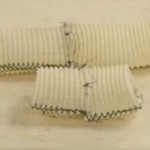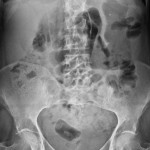Article of the Week: An assessment of the physical impact of complex surgical tasks on surgeon errors and discomfort
Every week the Editor-in-Chief selects the Article of the Week from the current issue of BJUI. The abstract is reproduced below and you can click on the button to read the full article, which is freely available to all readers for at least 30 days from the time of this post.
In addition to the article itself, there is an accompanying editorial written by a prominent member of the urological community. This blog is intended to provoke comment and discussion and we invite you to use the comment tools at the bottom of each post to join the conversation.
If you only have time to read one article this week, it should be this one.
An assessment of the physical impact of complex surgical tasks on surgeon errors and discomfort: a comparison between robot-assisted, laparoscopic and open approaches
OBJECTIVES
To evaluate, in a simulated suturing task, individual surgeons’ performance using three surgical approaches: open, laparoscopic and robot-assisted.
SUBJECTS AND METHODS
Six urological surgeons made an in vitro simulated vesico-urethral anastomosis. All surgeons performed the simulated suturing task using all three surgical approaches (open, laparoscopic and robot-assisted). The time taken to perform each task was recorded. Participants were evaluated for perceived discomfort using the self-reporting Borg scale. Errors made by surgeons were quantified by studying the video recording of the tasks. Anastomosis quality was quantified using scores for knot security, symmetry of suture, position of suture and apposition of anastomosis.
RESULTS
The time taken to complete the task by the laparoscopic approach was on average 221 s, compared with 55 s for the open approach and 116 s for the robot-assisted approach (anova, P < 0.005). The number of errors and the level of self-reported discomfort were highest for the laparoscopic approach (anova, P < 0.005). Limitations of the present study include the small sample size and variation in prior surgical experience of the participants.
CONCLUSIONS
In an in vitro model of anastomosis surgery, robot-assisted surgery combines the accuracy of open surgery while causing lesser surgeon discomfort than laparoscopy and maintaining minimal access.



